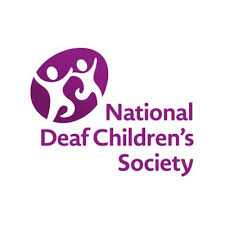Using objects to promote early communication and language for deafblind children
Patricia Gibbons, Advisory Teacher for Deafblind Children, Manchester
Children with limited or no vision take longer than sighted children to acquire language. Parents and teachers are advised of the importance of speaking, providing commentary and descriptions of the child’s actions, events taking place, who is in the room, and so on. Once they have cottoned on to language, blind children depend on speech to support tactile information to access and understand the world around them.
If a child is deafblind it can be difficult to tell if she is aware or interested in anything you may want to offer. The child may be resistant, unwilling to touch anything, reluctant or unable to acknowledge other people, may spend a great deal of time protesting or unhappy, may seem isolated. The problem of limited, fragmented or distorted access to information is central to the difficulties which have to be overcome. The strategies used with other children are unlikely to be effective.
However, for deafblind, as well as for hearing, sighted children, the foundations of language stem from the early interactive communication between child and care-giver, based on the patterns, routines and sequences of life. The consistency of the repeated patterns supports memory, confidence and security and occasional inconsistencies, when something different occurs, provoke experimentation.
Development of shared gaze and pointing allows development from mutual reciprocity into a triangulated situation where the pair share their attention with another focus, beyond themselves. This in turn enables sharing of `topics of conversation’ outside of the baby’s immediate self. Baby learns to follow mum’s gaze towards the dog sitting beside her and learns to watch the hands reach to lift her up or towards the bottle. Learning to follow the line as her arm reaches towards an object provides the basis for understanding pointing as a means of referring to something. It is a `preparation for the referential function of the word’ (Janssen, 2002). The skill of being able to find what is being talked about ensures that the baby can work out the references more quickly and easily.
For the deafblind child, finding the references depends on ensuring tactual access as a compensatory strategy, making up for the lack of visual information. This means placing an emphasis on the role of the hands and touch, using real objects, with co-active strategies, for instance moving your hand under or beside the child’s while you encourage exploration, or bringing objects within reach of accidental movements.
The first priority then, regardless of the age of the deafblind child, is to build in routines and sequences, which allow the child to remember and recognise patterns in events. Once anticipation and prediction are possible the world becomes a less frightening place and the child will have greater control. She can then relax and concentrate on meaning and interpretation of events and learn how to participate. Then key actions and objects can be highlighted and linked to the gesture, sign and spoken word. In early care, baby cries with hunger, bringing mum in post-haste. She speaks and touches the baby and picks it up saying “up you come”, linking action to auditory and gestural communication. If the child is deafblind, “Come to mummy” could be accompanied by taking the child’s hand to her face as she speaks, as a substitute for the gaze.
Many imitation and resonance behaviours, such as smiling, pulling faces, copying hand movements, between carer and typical baby are driven and reinforced by vision. These behaviours allow the early learning about ‘me and you’. When working with a deafblind child we need to replicate the reciprocity through touch, using similar “intensive interaction” techniques. Games and activities involving contact, swinging together on a two-person swing, dancing, massage are possibilities. Hands become a vital communication tool; mutual hand play will lead naturally on to tactual exploration of the communication partner, as well of the objects and features within the environment.
Making full use of sound, vibration and direct touch can substitute for pointing and eye gaze. The child’s attention needs to be drawn beyond her own body to become aware there is something relevant or interesting. For a young child, or one at an early developmental stage, a resonance board might be helpful. This is just a plywood board on a frame so it is just off the floor. The child lies on the board and can feel the vibration made by tapping or perhaps a music box on it. This provides very strong motivation to reach out to the sensation. The intensity of the vibration at source provides sufficient feedback to support early development of localisation skills. Meanwhile the partner is using all the supporting language “Here I am, over here. Well done. Hello, you found me,” as well as encouraging through touch or bringing the object closer to ensure success. The child can then explore the object or person who caused the sensation, and in time will begin to understand the reference.
Tapping on an object, then back to the child and perhaps repeating the tapping co-actively with the child’s own hand reinforces the notion that there is something beyond herself, which might be interesting. Using sound will both alert the child, and also support the location skills that are vital if there is little or no vision. This “reach for sound” strategy (Frankenberg, 1989) is extensively used for children who have visual impairments, but is just as relevant to the deafblind child. Initially, you may want to allow the child to feel your hand as you tap the object and make the sound, before bringing the object directly into contact with her, but gradually the distance will be increased, as well as the angle, to encourage reach in different directions.
Even for children where spoken language is not thought to be a likely outcome, sound awareness at the level of prosody can contribute in an important way to their sense of security, awareness of events in the environment and their experience of connectedness with the world around themselves. Recent neurological knowledge gained from techniques such as magnetic resonance imagery puts it beyond doubt that the unused visual cortex in blind children can be appropriated to some degree by both the tactile and auditory systems (Nicholls, 2003). This should encourage us never to give up on amplification, despite the difficulties.
The role of the tangible object is central for the deafblind child’s communication and language learning, supporting a multi-modal approach using speech and co-active sign. If the bib is always put on for feeding, it becomes a key part of the child’s mental representation of feeding and the feeding process. After experiencing the routine over and over, just the touch of the bib will trigger the excitement, or relief, that the feed is coming. Despite the absence of signed or spoken language the object itself becomes a powerful communication tool.
Once the child can understand the ‘referential function’ of objects (Janssen, 2002) it is possible to begin to talk about an activity after the event. Hassan, who is eight, is learning to communicate predominantly through the use of objects and co-active signs, though speech is also used. A routine developed on his introduction to a new school involved a regular rock on a big rocking horse. Over a period of time he learned to associate a piece of rein and a lock of the mane with the horse, and the activity. Now he is able to choose the activity by choosing the objects, and he is able to have a ‘conversation’ with his mum about it when he goes home at night. Away from the horse, the objects help him to remember what he did. His intervenor and mum are both able to remind him of the horse song, teach him the hand sign, the spoken word and go on, using the ball pool ball, to remind him what he did afterwards. Saeed, who is seven, is making good use of his hearing aids and is developing spoken language. However, he cannot make use of the sorts of visual contextual clues that a sighted deaf child might need to clear up listening ambiguities. For him too, the use of objects remains an important part of enabling conversations and referring to events or experiences. In the absence of visual memory, tangible access to objects helps him to cement his understanding of what they are, how they are used and what they mean. Most importantly, the object helps him to establish with certainty what the conversation is about. Language can be contextualised by acting out, using real objects as props. He can plan the day, with an ‘object calendar’ or later on, possibly using 3D picture symbols, remember the sequence of a story using key objects, use objects from home to contribute to ‘News’ sessions and can go home with the little watering can to have a conversation with his mum about how he watered the plants. (Miles and Riggio, 1999)
These mental representations acquired through touch provide the bedrock of communication and language development for a deafblind child. Adults enable this learning of the meaning of objects and the communicative function they have by providing careful and consistent support, ensuring plenty of opportunity, and working together to explore co-actively. Above all, the adult provides the means for the child to access the information and receive organised sensory feedback and ensures the success and enjoyment of having a conversation.
References
| Frankenberg, A (l989) | “Reach for Sound”, unpublished guidance | Manchester Service for VI Children and Students |
| Janssen, M (2002) | Objects of Reference, Objects for Conversation. The Origins and Development of Objects of Reference in Europe | DBI Review, No 30, 11-15 |
| Miles, B & Riggio, M (1999) | Remarkable Conversations. A guide to developing meaningful communication with children and young adults who are deafblind | Perkins School for the Blind, Massachusetts USA |
| Nicholls, J (2003) | Unpublished presentation given at the Deafblind International Conference, Mississauga, Ontario, Canada | Deafblind International Conference Canada |
November 2003



